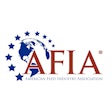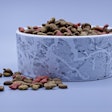The Center for Veterinary Medicine in the US Food and Drug Administration (FDA) held a public meeting on September 12, 2006, at its headquarters in Rockville, Maryland, USA, to discuss progress on development of its Animal Feed Safety System (AFSS). This program, initiated in 2003, is a multi-pronged approach by the agency to identify and address gaps in protection against risks to animal and public health from exposure to animal feed, including petfood.
In its effort to implement a "comprehensive, risk-based and preventive" feed safety program, FDA has identified four major areas of concern: the ingredient approval process, animal feed contaminants, process control and regulatory oversight. A draft framework outlining the principles and goals of AFSS can be found on its website (www.fda.gov/cvm/afssdraftframework.htm).
I believe this was the third public meeting on AFSS, but this one was specifically focused on the animal feed contaminant aspect. In fact, it addressed only one specific component of that aspect, namely, "Health Consequence Scoring."
What is Health Consequence Scoring?
As described at the meeting, FDA intends to assign a Health Consequence Score (HCS) to each identifiable potentially hazardous contaminant of animal feed or feed ingredients. This will include chemical contaminants, pathogenic microorganisms and physical contaminants, although to date more work has been done on the former two categories than the physical contaminant category. An HCS is comprised of two factors: the likelihood of illness upon exposure to the contaminant and the potential severity of the illness. These are identified as the Potency Score (PS) and the Severity Score (SS), respectively. Scores can be different whether they are assessments of the acute adverse effects, chronic (non-cancer) adverse effects or carcinogenic effects.
For example, an acute PS may be 1 for a chemical substance with an established high oral LD50 (a toxicological determination of the oral dose required to kill 50% of exposed animals). In other words, it would take consumption of a lot of this substance at once to have an adverse effect. A substance with a known low LD50, on the other hand, could have a PS as high as 10. An SS could also range from 1 to 10, with adverse effects ranging from none to death. The HCS, then, is defined as PS times SS. A contaminant with an HCS closer to 1 may be deemed to have minimal health consequences, while one approaching 100 would be of far greater concern.
What is it good for?
By itself, the HCS is not very revealing about the potential risk posed by a particular contaminant, and to rely on that value alone for guidance may lead to false impressions. To truly understand the risk, the likelihood of exposure to that contaminant in feed must also be assessed, so FDA intends to develop a method to assign what I presume will be called an Exposure Score (ES) for each potential contaminant as well. While the agency is reportedly close to releasing its thoughts on how the ES will be determined, details are being saved until the next public meeting.
Multiplying the HCS by the ES for a given substance will provide a Relative Risk Score, an estimate of risk relative to other contaminants. By ranking the results, regulatory program priorities, resource allocations and other risk management decisions can then be based in part on this relative risk ranking of contaminants. That does not mean, though, that the contaminant with the highest relative risk will receive the highest regulatory priority.
As I understand it, many other factors come into play, such as the availability of resources required to implement a risk management program and the potential effectiveness of that program with the available resources. For example, if due to unique issues with a contaminant, its risk cannot be managed despite commitment of considerable resources, then a contaminant with lower relative risk, but where effective measures are practical to implement, may be of higher priority to the agency.
Reportedly, FDA will use these relative risk rankings for internal guidance only, i.e., not to make regulatory decisions about an individual case of feed contamination. In those circumstances, an assessment to determine absolute risk, versus relative risk, is more appropriate.
Next steps
Based on the public feedback, FDA still has a lot of work in this area. For example, one meeting attendee seriously questioned the logic of a PS value at all for microbiologic pathogens, since as the organisms grow in the contaminated feed this value would change over time.
Personally, I have reservations about characterizing approved food additives as "contaminants," as presented at the meeting. Clearly, there must be regulatory oversight to ensure safe use of these ingredients, but lumping them in with things like pesticides, mycotoxins and dioxin may lead to incorrect impressions of their safety when used as required by law in feed. Perhaps when the ES values for these substances are determined, their relative risks can be put in proper context, and a more accurate representation of their safety will be seen.
Also, FDA noted that it is simply lacking data to allow for sound HCS determinations for many contaminants. An appeal was made for public input of safety data to facilitate the process, but it was made clear that any submission to the agency would be publicly releasable information.
As mentioned above, the next public meeting will discuss FDA's intended methods of ES determination (and presumably, more on the HCS for physical contaminants). It is not known when the next meeting will be at this time. In the interim, it is my understanding that FDA intends to post the presentations and transcripts from this meeting on the AFSS Docket (www.fda.gov/ohrms/dockets/dockets/03n0312/03n0312.htm).














